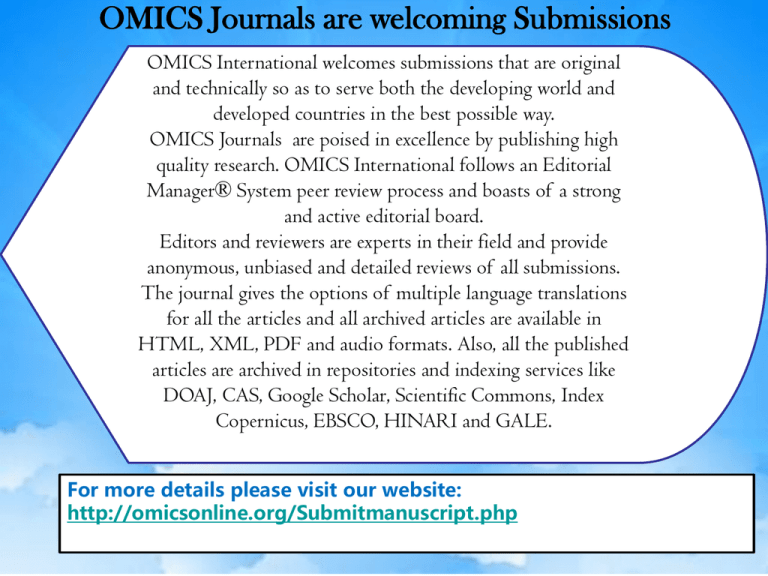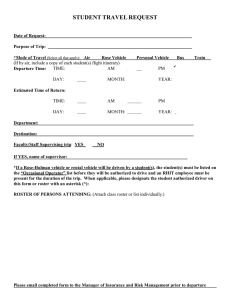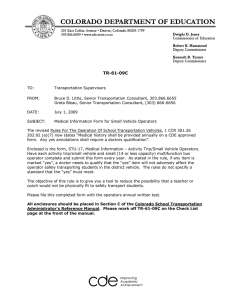OMICS Journals are welcoming Submissions
advertisement

OMICS Journals are welcoming Submissions OMICS International welcomes submissions that are original and technically so as to serve both the developing world and developed countries in the best possible way. OMICS Journals are poised in excellence by publishing high quality research. OMICS International follows an Editorial Manager® System peer review process and boasts of a strong and active editorial board. Editors and reviewers are experts in their field and provide anonymous, unbiased and detailed reviews of all submissions. The journal gives the options of multiple language translations for all the articles and all archived articles are available in HTML, XML, PDF and audio formats. Also, all the published articles are archived in repositories and indexing services like DOAJ, CAS, Google Scholar, Scientific Commons, Index Copernicus, EBSCO, HINARI and GALE. For more details please visit our website: http://omicsonline.org/Submitmanuscript.php 1 Personal Introduction Andrej Ivanco Assistant Research Professor Dept. of Automotive Engineering Vehicle powertrain SYSTEM modeling Infrastructure Driving Vehicle Component Component Vehicle Driving Infrastructure 2 Electric Machine Design Optimization 120 [kW]; Nsc:1.75 Dimsc: 1.5 FD: 6.425 1800 9 0 4 1 3 800 1 1000 32 1 1500 2000 2500 Speed [rpm] 5 0.001 500 150kW 0 .032 0.5 0.1 8 9 04611 87 100kW 7 50kW 3 2 4 5 6 1 10kW 3000 3500 89 Simulation Run EM Map Generation Optimization Routine Value Function Evaluation Optimal Design Design Variable Modification Component 0 000..5.0 1 2041 89 93 1 7 7 89 6 5 4 Design Variables 0.1 0.5 Vehicle Parameters 9 2 200 Military Drive Cycle 9 56 8 0.5 400 Optimization Framework 4 3 1 9 9 2 600 0 00.. 5100 3241 51 8 67 7 56 9 Torque [Nm] 5 1000 56 98 8 7 6 1200 42 3 2 1 101 1101 117 2 1 .002 0111 .1 8000.5 1 11 1121 1 9 1400 Heat Rejection [kW] Peak Torque [Nm] 45mph, 5% grade 10mph, 40% grade 2mph, 60% grade 75mph, 0% grade 10 9 13 10 9876543 14 13 1600 1 12 1 Vehicle Driving Infrastructure 3 Powertrain System: Evaluation of Advanced Transmissions • 4,7 and 10 speed transmissions coupled with engines and compared under consistent assumptions • More gears enable gain in both, 0-60 time and fuel economy Final Drive Optimization FTP-75 + HWFET cycle 7sp good 10sp Fuel Economy 4sp Performance Fuel economy bad Acceleration 0-60mph Trans - Base 4 speed Relative fuel consumption region [%] of total 1 1.5 2 2.5 3 0 Engine Torque 0.5 Conventional 4 speed 100kW 75kW 50kW 1 1.5 Component Vehicle 2.5 0 3 0.5 1 1.5 2 2.5 10 speed 75kW 50kW 100kW 75kW 50kW 25kW 15kW 10kW 5kW 25kW 15kW 10kW 5kW Engine Speed Driving 3 Conventional 100kW 25kW 15kW 10kW 5kW Engine Speed 2 7 speed Engine Torque 0.5 Conventional Engine Torque 0 Trans - 10 Speed DCT Relative fuel consumption region [%] of total Trans - 7 Speed DCT Relative fuel consumption region [%] of total Engine Speed Infrastructure 4 Energy Management Optimization Algorithm • The main role of the supervisory control is to decide about the power split between the engine and electric machine for given conditions EV Engine only SOC All Electric Generato r Split Ratio SoC [-] Motor Conventional Part of the city driving Charging Time [sec] Component Vehicle Driving Infrastructure 5 Driving patterns & Drive Cycles for EV Studies • How are people driving? Trip Distace 100 – One trip vs. Daily distance (battery capacity) – Time between trips (charging opportunities) Occurence [%] • How is the car being used? – Is fast charging necessary? – What is the EV range – distance to empty • Fuel economy benefits – Generate a representative test cycle – Adapt the calibration to the driver 50 0 15 150 Velocity (km/h) 100 100 50 0 100 80 10 5 4 5 Cycle duration (minutes) 5 60 2 0 1 # of cycles 40 50 1 15 5 50 50 40 40 30 30 20 20 10 10 20 40 60 Trip distance [mil] 14 0 0 20 40 60 Daily commute [mil] Energy & distance 12 10 8 6 4 Cycle duration (minutes) Vehicle 0 4 3 5 # of cycles 60 0 20 10 2 0 60 2 0 25 3 20 Cycle duration (minutes) Component 100 4 3 70 Energy expense estimate [kWh] 150 Velocity (km/h) Velocity (km/h) 150 70 Energy by trip and distance traveled, Mid size sedan assumed 20 Datapoints 18 Global Energy Estimate Distance Based estimates 16 Examples of naturalistic cycles for medium trips (5~15 km) Examples of naturalistic cycles for long trips (>15 km) 80 0 Daily drive 90 80 0 Data → Information → Knowledge Examples of naturalistic cycles for short trips (1~5 km) One Trip 90 Daily Distance Driven 100 2 0 1 # of cycles 10 20 30 40 Trip Distance [mil] 50 60 Data from CA household travel survey 2001 Driving Infrastructure 6 EV driving range estimation Energy expense estimate [kWh] Energy by trip and distance traveled, Mid size sedan assumed 20 Datapoints 18 Global Energy Estimate Distance Based estimates 16 Distance to empty estimation 14 12 10 Road and Traffic information joined 8 6 4 Driving style matters 2 0 0 10 20 30 40 Trip Distance [mil] Component 50 Vehicle 60 Driving Infrastructure 7 Traffic Flow Reconstruction and Routing • Transportation Modeling • Network Routing • Traffic Allocation Daytime Manhattan Traffic Flow Estimation Component Vehicle Driving Infrastructure 8 Component System Level Perspective Vehicle Driving Infrastructure Dr. Andrej IVANCO Research Assistant Professor e-mail: aivanco@clemson.edu P: 864-283-7241 M: 734-757-5637 Thanks to our sponsors! 9 Related Journals Industrial Engineering and Management Journal of Stock and Forex Trading 10 For upcoming Conference visit http://www.conferenceseries.com/ 11


